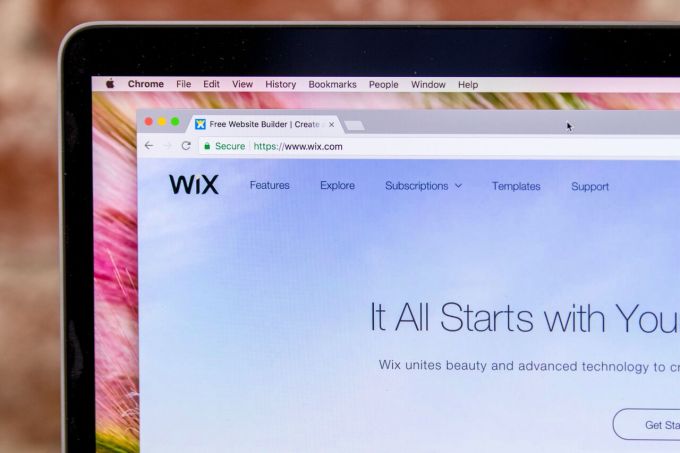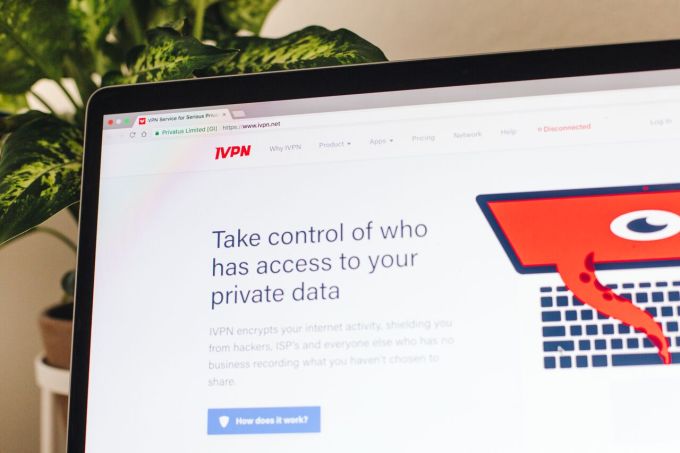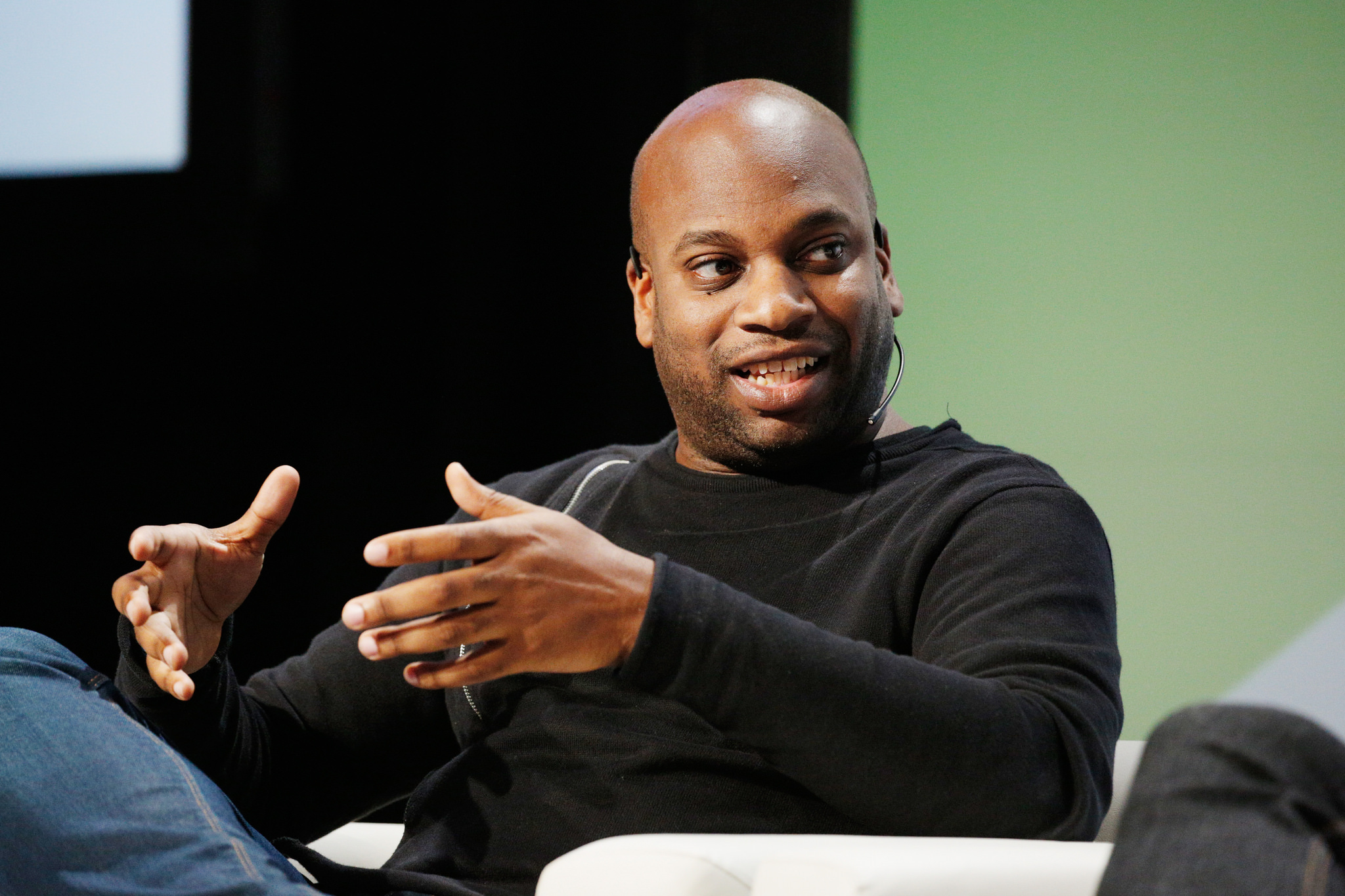Sunday, September 30, 2018
Another hour!
Machine Learning in a Box (Part 9): Build Your First ML Application
A Quick Recap
Last time, we looked at how to use TensorFlow from within SAP HANA, express edition. This allows you to surface your TensorFlow ModelServer models inside your instances and use them as a regular stored procedure.
This allows, for example, to process images or documents stored as blobs with an image classification model or something as simple as a classification on the Iris dataset.
from DZone.com Feed https://ift.tt/2NdlNRe
Using AWS Lambda for Multi-Location Media Transform
With the rising number of global viewership, it is highly critical for media giants to serve their customer needs. With an increasing number of the viewers, the number of device formats has also increased.
There could be a situation where you have a lot of media files that you need to change dimensions of or apply a watermark to, for example. To make such cases seamless, it is imperative to offer content in multiple formats at multiple locations.
from DZone.com Feed https://ift.tt/2xRJeuH
DZone Research: Database Issues
To gather insights on the current and future state of the database ecosystem, we talked to IT executives from 22 companies about how their clients are using databases today and how they see use and solutions changing in the future.
We asked them, "What are the most common issues you see companies having with databases?" Here's what they told us:
from DZone.com Feed https://ift.tt/2xQgEtT
7 Ways to Customize API Monitoring Using Global and Local Variables
It is possible to configure API monitors with rigidly fixed parameters. However, using the API Science platform, it is also possible to configure API monitors using both account-wide global variables and monitor-specific local variables, in order to provide your team with a deeper view into what your customers are experiencing.
Introduction to API Science's Global Variables
The API Science platform provides capabilities for saving, retrieving, and deleting global variables. The Parameters section on the API Science Help page provides this description:
from DZone.com Feed https://ift.tt/2Ncavgj
AyeSpy, A New Way to Test for Visual Regressions
Bill Gates famously said, “I will always choose a lazy person to do a difficult job because a lazy person will find an easy way to do it.”
At The Times, there is an incredible amount of business value placed on the aesthetics of the site. There have also been past incidents where CSS bugs have caused rollbacks.
from DZone.com Feed https://ift.tt/2xOnRup
How to Implement a Kafka Producer
This article deals with the ways to implement a Kafka producer.
A Kafka producer is an application that can act as a source of data in a Kafka cluster. A producer can publish messages to one or more Kafka topics.
from DZone.com Feed https://ift.tt/2Ndamco
Another hour!
Voxxed Days Microservices: Migrating a Monolith to Microservices
Hi Mike, tell us who you are and what lead you into microservices.
Hi, my name is Mike Francois and I've been freelance in Belgium for 5 years now (and more than 14 years in development). I'm coming from France and traveled in many places to get experience, learned different approaches and culture around software development to end-up involved in architecture role. Because technology evolves fast, IT strategy became the key of the business for many customers. Because of that, we faced many changes in software engineering and evolution to focus on releasing better, faster, cheaper and simpler. Naturally many approaches involved modularity (OSGi) and even microservices (which is the name of an entirely managed environment, and not the only simple approach of application implementation ). I followed researches, architecture, discussion and implementation which demonstrate the benefits and the added value for customers needs.
from DZone.com Feed https://ift.tt/2DKmBOm
Why Disruption Still Matters and 5 Ways to Deal With It (Part I)
Disruption. This word has fallen from the headlines because it's "so 2017." But not all industries have been disrupted yet. And those that have will likely be disrupted again. Are you ready to respond? Can you keep up with a more nimble company that comes in to steal your market share?
Last week, I watched a talk by a woman who predicts where certain technologies will go and invests accordingly. According to her, analysts are too focused on today. She predicts that blockchain, 3D printing, and eventually robotics, will combine within the next few years to completely disrupt the supply chains of most companies. To me, this means that companies that thought they were relatively immune to overnight disruption could soon be ripe for it.
from DZone.com Feed https://ift.tt/2xRNBG2
Digital Identity's Unlikely Cure for Improving Patient Experiences
Competition is heating up as cost pressures and value-based care models drive a continuous stream of consolidation through M&A in healthcare. A once-distributed landscape of local and regionally owned providers and insurers has become an industry defined by economies of scale, standardization, and competition across state lines:
- The top 12 health insurance companies make up just over 50 percent of revenue in the American health insurance market. (1)
- By 2024, "Only 50 percent of current health systems will likely remain," predicts a Deloitte analysis. (2)
To differentiate themselves from the competition, market leaders among payers and providers are turning to improved experiences. And here's another key stat for you: a whopping 91% of consumers say patient experience is either an extremely (55%) or a somewhat (36%) significant factor in health care decision making, according to the recent Consumer Perspectives on Patient Experience study. (3)
from DZone.com Feed https://ift.tt/2DQL3NM
Error Monitoring in Symfony
Symfony is a PHP model-view-controller framework used to develop web applications. The main reasons Symfony has gained fame among the developer community are its database engine compatibility, its faster development, and its robust system. These features make it easy to develop and customize web applications.
To make your web application successful, you should consider how user experience is affected by the inevitable errors that pop up in production. Customers can walk away from a purchase or churn out from a subscription when applications do not run properly. A fast response to critical problems is essential. To minimize customer impact, it is important to track and fix issues quickly.
from DZone.com Feed https://ift.tt/2xRShvC
Solution to Legacy System Gridlock
Thanks to OutSystems for inviting me to their NextStep user conference to meet their customers, executives and to learn about their new initiatives. During the initial keynote, Paulo Rosado, CEO and Founder of OutSytems, announced the release of OutSystems 11, the first low-code solution to address legacy system gridlock. OutSystems 11 delivers new advanced capabilities to help organizations modernize legacy systems and replace large application portfolios.
“The legacy gridlock problem is huge,” said Rosado, CEO. “Seventy percent of IT budgets are spent maintaining large portfolios of legacy apps, including aging systems and brittle, over-customized ERP and CRM systems. This massive technical debt is a roadblock to business innovation, and it opens the door to disruption by more agile competitors.”
from DZone.com Feed https://ift.tt/2DKmx14
Azure Outage Post-Mortem — Part 3
My previous blog posts, Azure Outage Post-Mortem - Part 1 and Azure Outage Post-Mortem Part 2, made some assumptions based upon limited information coming from blog posts and Twitter. I just attended a session at Ignite which gave a little more clarity as to what actually happened. Sometime soon, you should be able to view the session for yourself.
BRK3075 — Preparing for the Unexpected: Anatomy of an Azure Outage
They said the official Root Cause Analysis will be published soon, but in the meantime, here are some tidbits of information gleaned from the session.
from DZone.com Feed https://ift.tt/2xRNz0S
Another hour!
90 New Features and APIs in JDK 11 (Part 2)
The new six-month release cadence of the JDK means that before we’ve even really figured out what the new features are in JDK 10 along comes JDK 11. I posted an earlier blog where I listed all 109 new features and APIs I could find in JDK 10, so it seemed obvious to do the same thing for JDK 11. I’m going to use a different format from the previous post. In this series, I have divided everything into two sections: features that are visible to developers and everything else. This second installment focuses on everything else — from nest-based access control to garbage collectors and more.
Non-Developer Features
JEP 181: Nest-Based Access Control
Java (and other languages) supports nested classes through inner classes. To make this work correctly, it requires the compiler to perform some tricks. Here’s an example:
from DZone.com Feed https://ift.tt/2xSMG8p
BroodMinder Is Saving Bee Colonies Through the IoT
There is an estimated 115,000 – 125,000 beekeepers in the United States. The vast majority are hobbyists with less than 25 hives. Commercial beekeepers are those with 300 or more hives. During the last 10 years, the US has been averaging 30% hive loss over winter. Last winter, across the Midwest, numerous states lost more than 60 percent.
I recently spoke to Rich Morris, an avid beekeeper and enginee, who lives in Madison, Wisconsin. He's the creator of a device called BroodMinder that enables beekeepers to figure out the temperature and humidity of their hive without dismantling the hive.
from DZone.com Feed https://ift.tt/2P2rseK
Another hour!
Trump administration sues California over its brand-new net neutrality law
The Department of Justice announced on Sunday that it has filed a lawsuit against California to block its new net neutrality law, just hours after it was signed by governor Jerry Brown. The lawsuit was first reported by the Washington Post. Senior Justice Department officials told the newspaper it is filing the lawsuit because only the federal government can regulate net neutrality and that the Federal Communications Commission had been granted that authority by Congress to ensure states don’t write conflicting legislation.
In its announcement, the Justice Department stated that by signing California’s Senate Bill 822 into law, the state is “attempting to subvert the Federal Government’s deregulatory approach by imposing burdensome state regulations on the free Internet, which is unlawful and anti-consumer.”
Attorney General Jeff Sessions said “under the Constitution, states do not regulate interstate commerce—the federal government does. Once again the California legislature has enacted an extreme and illegal state law attempting to frustrate federal policy. The Justice Department should not have to spend valuable time and resources to file this suit today, but we have a duty to defend the prerogatives of the federal government and protect our Constitutional order.”
This is the latest of several legal showdowns between the Trump administration and California, the largest blue state.
Under Attorney General Sessions, the Justice Department has already filed separate lawsuits against California over immigrant sanctuary laws and a law meant to stop the Trump administration from selling or transferring federal land to private corporations. The Trump administration is also clashing with the state over environmental protection regulations.
Senate Bill 822 was introduced by Democratic Senator Scott Wiener to reinstate Obama-era net neutrality protections tossed out by the FCC last year.
Even though Washington and Oregon have also passed their own net neutrality laws, the outcome of the federal government’s battle with California will have ramifications throughout the country because the state’s new net neutrality law is the most stringent one so far, banning most kinds of zero-rating, which allows telecoms to offer services from certain providers for free.
As such, it has been the target of fierce lobbying by telecoms like AT&T and Comcast. While the FCC’s chairman Ajit Pai and telecoms argue that zero-rating allows them to offer better deals (Pai claimed in the Justice Department’s statement today that they have proven popular “especially among lower-income Americans,”) net neutrality advocates say it gives Internet service providers too much power by forcing users to rely on certain services, stifling consumer options and freedom of information.
from TechCrunch https://ift.tt/2Nd9ep2
The best gear for starting a small business
Editor’s note: This post was done in partnership with Wirecutter. When readers choose to buy Wirecutter’s independently chosen editorial picks, Wirecutter and TechCrunch may earn affiliate commissions.
When you’re ready to start a small business, having some helpful essentials will make the process a bit easier. Whether you need to print your own business cards or you’re ready to process orders on a reliable laptop, we’ve put together a few of our recommendations that will cover the basics.

Photo: Michael Hession
Business Card Printing Service: Vistaprint
Vistaprint has the best print quality of all the services we tested, and its website offers the best ordering and design experience. If you don’t need a large quantity of business cards, Vistaprint will allow you to order batches as small as 100. You can choose from thousands of templates and a variety of finishes. During printing testing, we were able to read small type and we found that the service’s colors and trimming were accurate.

Photo: Kyle Fitzgerald
Website Builder for Small Businesses: Wix
For an easy-to-use website builder that makes editing, creating, and finding your business’ site manageable, we recommend Wix. Compared to other site builders we tested, Wix’s template-editing tools get a working site up and running fastest. The platform offers a broad range of plug-ins for integrating tools like Google Maps and OpenTable. Adding plug-ins for things like contact forms, menus and reservations is also painless. There aren’t an overwhelming number of website templates, but the ones that are available offer a good mix. Plus Wix has an intuitive editing interface and built-in SEO tools.

Photo: Kyle Fitzgerald
Windows Ultrabook: Dell XPS 13
The Dell XPS 13 is a powerful laptop that can be used on the go or with your home office setup. It’s light, has a durable build, plus it’s equipped with an impressive 13.3-inch screen. Previous versions of the XPS 13 have been our top pick for over three years, because it offers the best balance of features and performance of any ultrabook we’ve tested. We like that it’s compact, comes with a good trackpad and keyboard, and that it has a mix of new and old ports. We recommend the configuration that has 8GB of RAM, a 256 GB PCIe solid-state drive, and an Intel Core i7-8550U processor.

Photo: Kyle Fitzgerald
All-in-one Printer: HP OfficeJet Pro 8720
Having your own all-in-one printer will let you print and scan important documents whenever you need to. The HP OfficeJet Pro 8720 offers simple installation and it’s paired with intuitive software and ink that’s affordable. It has a durable build and a large, responsive touchscreen. In addition to handling everyday printing tasks, the OfficeJet Pro can produce colorful graphics and high-quality photos. You can connect to and operate the printer from a computer, tablet, mobile device or the printer control panel. In our tests over Wi-Fi, we didn’t experience any connectivity issues.

Photo: Kyle Fitzgerald
VPN Service: IVPN
A trusted virtual private network provides more online protection beyond device encryption, secure passwords and privacy plug-ins while using a home network or public Wi-Fi. After spending over 130 hours testing 32 VPN services, we chose IVPN as the best VPN provider for most people. It’s easy to set up, has easy-to-use apps, and can be used with most any device running macOS, Windows, iOS or Android. Overall, IVPN offers solid performance and doesn’t cut corners on security nor transparency. You don’t have to worry about your activity or logins being monitored. It’s pricier than competitors but worth the investment because it’s fast, stable, integrates with all major platforms, and comes with features that block data on unsecured connections.
These picks may have been updated by Wirecutter. When readers choose to buy Wirecutter’s independently chosen editorial picks, Wirecutter and TechCrunch may earn affiliate commissions.
from TechCrunch https://ift.tt/2NTjoAJ
Another hour!
Another hour!
Another hour!
Another hour!
Another hour!
Unbiased algorithms can still be problematic
Creating unbiased, accurate algorithms isn’t impossible — it’s just time consuming.
“It actually is mathematically possible,” facial recognition startup Kairos CEO Brian Brackeen told me on a panel at TechCrunch Disrupt SF.
Algorithms are sets of rules that computers follow in order to solve problems and make decisions about a particular course of action. Whether it’s the type of information we receive, the information people see about us, the jobs we get hired to do, the credit cards we get approved for, and, down the road, the driverless cars that either see us or don’t, algorithms are increasingly becoming a big part of our lives. But there is an inherent problem with algorithms that begins at the most base level and persists throughout its adaption: human bias that is baked into these machine-based decision-makers.
Creating unbiased algorithms is a matter of having enough accurate data. It’s not about just having enough “pale males” in the model, but about having enough images of people from various racial backgrounds, genders, abilities, heights, weights and so forth.

Kairos CEO Brian Brackeen
“In our world, facial recognition is all about human biases, right?” Brackeen said. “And so you think about AI, it’s learning, it’s like a child and you teach it things and then it learns more and more. What we call right down the middle, right down the fair way is ‘pale males.’ It’s very, very good. Very, very good at identifying somebody who meets that classification.”
But the further you get from pale males — adding women, people from different ethnicities, and so forth — “the harder it is for AI systems to get it right, or at least the confidence to get it right,” Brackeen said.
Still, there are cons to even a one hundred percent accurate model. On the pro side, a good facial recognition use case for a completely accurate algorithm would be in a convention center, where you use the system to quickly identity and verify people are who they say they are. That’s one type of use case Kairos, which works with corporate businesses around authentication, addresses.
“So if we’re wrong, at worst case, maybe you have to do a transfer again to your bank account,” he said. “If we’re wrong, maybe you don’t see a picture accrued during a cruise liner. But when the government is wrong about facial recognition, and someone’s life or liberty is at stake, they can be putting you in a lineup that you shouldn’t be in. They could be saying that this person is a criminal when they’re not.”
But in the case of law enforcement, no matter how accurate and unbiased these algorithms are, facial recognition software has no business in law enforcement, Brackeen said. That’s because of the potential for unlawful, excessive surveillance of citizens.
Given the government already has our passport photos and identification photos, “they could put a camera on Main Street and know every single person driving by,” Brackeen said.
And that’s a real possibility. In the last month, Brackeen said Kairos turned down a government request from Homeland Security, seeking facial recognition software for people behind moving cars.
“For us, that’s completely unacceptable,” Brackeen said.
Another issue with 100 percent perfect mathematical predictions is that it comes down to what the model is predicting, Human Rights Data Analysis Group lead statistician Kristian Lum said on the panel.

Human Rights Data Analysis Group lead statistician Kristian Lum
“Usually, the thing you’re trying to predict in a lot of these cases is something like rearrest,” Lum said. “So even if we are perfectly able to predict that, we’re still left with the problem that the human or systemic or institutional biases are generating biased arrests. And so, you still have to contextualize even your 100 percent accuracy with is the data really measuring what you think it’s measuring? Is the data itself generated by a fair process?”
HRDAG Director of Research Patrick Ball, in agreement with Lum, argued that it’s perhaps more practical to move it away from bias at the individual level and instead call it bias at the institutional or structural level. If a police department, for example, is convinced it needs to police one neighborhood more than another, it’s not as relevant if that officer is a racist individual, he said.

HRDAG Director of Research Patrick Ball
“What’s relevant is that the police department has made an institutional decision to over-police that neighborhood, thereby generating more police interactions in that neighborhood, thereby making people with that ZIP code more likely to be classified as dangerous if they are classified by risk assessment algorithms,” Ball said.
And even if the police were to have perfect information about every crime committed, in order to build a fair machine learning system, “we would need to live in a society of perfect surveillance so that there is absolute police knowledge about every single crime so that nothing is excluded,” he said. “So that there would be no bias. Let me suggest to you that that’s way worse even than a bunch of crimes going free. So maybe we should just work on reforming police practice and forget about all of the machine learning distractions because they’re really making things worse, not better.”
He added, “For fair predictions, you first need a fair criminal justice system. And we have a ways to go.”
from TechCrunch https://ift.tt/2OXXCYP
The war over music copyrights
VC firms haven’t been the only ones raising hundreds of millions of dollars to invest in a booming market. After 15+ years of being the last industry anyone wanted to invest in, the music industry is coming back, and money is flooding in to buy up the rights to popular songs.
As paid streaming subscriptions get mainstream adoption, the big music streaming services – namely Spotify, Apple Music, and Tencent Music, but also Pandora, Amazon Music, YouTube Music, Deezer, and others – have entered their prime. There are now over 51 million paid subscription accounts among music streaming services in the US. The music industry grew 8% last year globally to $17.3 billion, driven by a 41% increase in streaming revenue and 45% increase in paid streaming revenue.
The surge in music streaming means a surge in income for those who own the copyrights to songs, and the growth of entertainment in emerging markets, growing use in digital videos, and potential use of music in new content formats like VR only expand this further. Unsurprisingly, private equity firms, family offices, corporates, and pension funds want a piece of the action.
There are two general types of copyrights for a song: the publishing rights and the master rights. The musical composition of a song – the lyrics, melodies, etc. – comes from songwriters who own the publishing right (though generally they sign a publishing deal and their publisher gets ownership of it in addition to half the royalties). Meanwhile, the version of a song being performed comes from the recording artist who owns the master right (though usually they sign a record deal and the record label gets ownership of the masters and most of the royalties).
Popular songs are valuable to own because of all the royalties they collect: whenever the song is played on a streaming service, downloaded from iTunes, or covered on YouTube (a mechanical license), played over radio or in a grocery store (a performance license), played as soundtrack over a movie or TV show (a sync license), and for other uses. More royalty income from a song goes to the master owner since they took on more financial risk marketing it, but publishers collect royalties from some channels that master owners don’t (like radio play, for instance).
For a songwriter behind popular songs, these royalties form a predictable revenue stream that can amount to tens of thousands, hundreds of thousands, or even millions of dollars per year. Of course, most songs that are written or recorded don’t make any money: creating a track that breaks out in a crowded industry is hard. This scarcity – there are only so many thousands of popular musicians and a limited number of legendary artists whose music stays relevant for decades – means copyrights for successful musicians command a premium when they or their publisher decide to sell them.
Investing in streaming economics
In 2017, revenue from streaming services accounted for 38% of worldwide music industry revenue, finally overtaking revenue from traditional album sales and song downloads. Subscription streaming services hit a pivot point in gaining mainstream adoption, but they still have far to go. Goldman Sachs media sector analyst Lisa Yang predicted that by 2030, the global music industry will reach $41 billion in market size as the global streaming market multiplies in size to $34 billion (nearly all of it from paid subscriptions).

Merck Mercuriadis is seen on the left. (Photo by KMazur/WireImage for Conde Nast media group)
Earlier this week, I spoke with Merck Mercuriadis who has managed icons like Elton John, Guns N’ Roses, and Beyoncé and raised £200 million ($260 million) on the London Stock Exchange in June for an investment vehicle (Hipgnosis Songs) to acquire the catalogues of top songwriters. His plan is to raise and invest £1 billion over the next three to five years, arguing that the shift to passive consumers paying for music will take the industry to heights it has never seen before.
Indeed, streaming music is a paradigm shift from the past. With all the world’s music available in one interface for free (with ads) or for an affordable subscription (without ads), consumers no longer have to actively choose which specific songs to buy (or even which to download illegally).
With it all in front of them and all included in the price, people are listening to a broader range of music: they’re exploring more genres, discovering more musicians who aren’t stars on traditional radio, and going back to music from past decades. Consumers who weren’t previously buying a lot of music are now subscribing for $120 per year and spreading it across more artists.
Retail businesses are doing the same: through streaming offerings like Soundtrack Your Brand (which spun out of Spotify), they’re using commercial licenses – which are more expensive – to stream a broader array of music in stores rather than putting on the radio or playing the same few CDs.
Much of the music industry’s market growth is happening in China, India, Latin America, and emerging markets like Nigeria where subscription apps are replacing widespread music piracy or non-consumption. Tencent Music Entertainment, whose three streaming services have roughly 75% market share in China (a music market that expanded by 34% last year), is preparing for an IPO that could give it roughly the same $29 billion valuation Spotify received in its IPO in April. Meanwhile, music industry revenue from Latin America grew 18% last year.
Western music is infused in pop culture worldwide, so as these countries enter the streaming era they are monetizing hundreds of millions of additional listeners, through ad revenue at a minimum but increasingly through paid subscriptions as well.
At the talent management, publishing, and production firm Primary Wave, founder Larry Mestel is seeing emerging markets drive more revenue to his clients (like Smokey Robinson, Alice Cooper, Melissa Etheridge, and the estate of Bob Marley) as new fan bases engage with their music online. He raised a new $300 million fund (backed by Blackrock and other institutions) in 2016 to acquire rights in music catalogues amid a market he says has improved substantially due to growth opportunities stemming from the streaming model.
It’s not just streaming music platforms that are driving growth either. Streaming video has exploded, whether it’s from short YouTube videos or the growing number of shows on platforms like Hulu and Amazon Prime Video, and with that comes growing sync licensing of songs for their soundtracks; global sync licensing revenue was up 10% year-over-year in 2017 alone. Over the last year, Facebook signed licenses with every large publisher to cover use of song clips by its users in Instagram Stories and Facebook videos as well.
The inflating valuations of songs catalogues
Catalogues are commonly valued based on the “net publisher’s share,” which is the average amount of annual royalty money left over after paying out any percentages owed to others (like a partial stake in the royalties still held by the artist).
When Round Hill Music acquired Carlin for $245 million in January to gain ownership in the catalogues of Elvis Presley, James Brown, AC/DC, and others, it paid a 16x multiple on net publisher share, which is high but not uncommon in the current market when trading catalogues of legendary artists. Just three years ago, multiples anchored in the 10-12 range (or less for newer or smaller artists whose music has not yet shown the same longevity).

Avid Larizadeh Duggan left her role as a general partner at GV to become Chief Strategy & Business Officer of Kobalt
Kobalt, which raised $205 million from VC firms like GV and Balderton Capital to become a technology-centric publisher and label services powerhouse, has also become an active player in the space. Aside from its core operating business (where it stands out from traditional publishers and labels for not taking control of clients’ copyrights), it has raised two funds ($600M for the most recent one) to help institutional investors like the Railpen pension fund in the UK gain exposure to music copyrights as an asset class. In December, their fund acquired the catalogue of publisher SONGS Music Publishing for a reported $160M in a sale process against 13 other bidders looking to buy ownership in songs by Lorde, The Weeknd, and other young pop and hip-hop artists.
Too high a price?
The natural question to ask when there’s a rapid surge of money (and a corresponding surge in prices) in an asset class is whether there’s a bubble. After all, last year’s industry revenues were still only 68% of those in 1999 and the rate of growth will inevitably slow once streaming has captured the early majority of consumers.
But the fundamentals driving this capital are in line with a secular shift – it’s evident that music streaming still has a lot of room to grow in a few short years, especially as a large portion of the human population is just coming online (and doing so over mobile first). Plus as new content formats like augmented and virtual reality come to fruition, new categories of music sync licensing will inevitably accompany them for their soundtracks.
Each catalogue is its own case, of course. As Shamrock Capital managing director Jason Sklar emphasized to me, the rising tide isn’t lifting all boats equally. The streaming revolution appears to be disproportionately benefiting hip-hop, rap, and pop given the youth skew of streaming service users and the digital-native social media engagement of the artists in those genres.
Beyond the purchase price, the critical variable for evaluating a deal in this market is also the operational value a potential buyer can provide to the catalogue: their ability to actively promote songs from the past by pitching them to new TV shows, ad campaigns, and any number of other projects that will keep them culturally relevant. This is where strategic investors have an advantage over purely financial investors in publishing rights, especially when it comes to the longer tail of middle-tier artist’s whose music doesn’t naturally get the inbound demand that the Beatles or Prince catalogues do.
With strong long-term market growth and a wide range of possible niches and strategies, music copyrights are an asset class where we’ll see a number of major new players develop.
from TechCrunch https://ift.tt/2OuCpsN
Another hour!
Another hour!
Another hour!
Another hour!
Another hour!
Another hour!
Until data is misused, Facebook’s breach will be forgotten
We cared about Cambridge Analytica because it could have helped elect Trump. We ignored LocationSmart because even the though the company was selling and exposing the real-time GPS coordinates of our phones, it was never clear exactly if or how that data was misused.
This idea, that privacy issues are abstract concepts for most people until they become security or ideological problems, is important to understanding Facebook’s massive breach revealed this week.
The social network’s engineering was sloppy, allowing three bugs to be combined to steal the access tokens of 50 million people. In pursuit of rapid growth at affordable efficiency, Facebook failed to protect its users. This assessment doesn’t discount that. Facebook screwed up big time.
But despite the potential that those access tokens could have let the attackers take over user accounts, act as them, and scrape their personal info, it’s unclear how much users really care. That’s because for now, Facebook and it’s watchdogs aren’t sure exactly what data was stolen or how it was wrongly used.
The Hack That Broke The Camel’s Back?
This could all change tomorrow. If Facebook discovers the hack was perpetrated by a foreign government to interfere with elections, by criminals to bypass identity theft security checkpoints and steal people’s bank accounts or social media profiles, or to target individuals for physical harm, out will come the pitchforks and torches.
Given a sufficiently scary application for the data, the breach could finish the job of destroying Facebook’s brand. If users start clearing their profile data, reducing their feed browsing, and ceasing to share, the breach could have significant financial and network effect consequences for Facebook. After years of scandals, this could be the hack that’s broke the camel’s back.
Yet in the absence of that evil utilization of the hacked data, the breach could fade into the background for users. Similar to the tension-filled departures of the founders of Facebook’s acquisitions Instagram and WhatsApp, the brunt of the backlash may not come from the public.
The hack could hasten regulation of social media. Senator Warner called on Congress to “step up” following the hack. He’s previously advocated for privacy laws similar to Europe’s GDPR. That includes data portability and interoperability rules that could make it easier to switch social networks. That threat of people moving to competing apps could succeed in compelling Facebook to treat user privacy and security better.
One of the biggest questions about the attack is whether the tokens were used to access other services like Airbnb or Spotify that rely on Facebook Login. The breach could steer potential partners away from building atop Facebook’s identity platform. But at least you don’t have to worry about changing all your passwords. Unlike hacks that steal usernames and passwords, the lasting danger of the Facebook breach is limited. The access tokens have already been invalidated, whereas password reuse can lead people to have their other apps hacked long after the initial breach.
Desensitized
If government investigators, journalists, or anti-Facebook activists want to make the company pay for its negligence, they’ll need to connect it to some concrete threat to how we live or what we believe.
For now, without a nefarious application of the breached data, this scandal could blend into the rest of Facebook’s troubles. Every week, sometimes multiple times a week, Facebook has some headline grabbing problem. Over time, those are adding up to deter usage of Facebook and spur more users to delete it. But without an independent general purpose social network they can easily switch to, many users have endured Facebook’s stumbles in exchange for the connective utility it provides.
As breaches become more common, the public may be desensitized. Between Equifax, Yahoo, and the cell phone companies, we’re growing accustomed to letting out a deep sigh with maybe some expletives, and moving on with our lives. The ones we’ll remember will be those where the danger metastasized from the digital world into our offline lives.
from TechCrunch https://ift.tt/2xOPS54
Carpooling service Klaxit partners with Uber for last-minute changes
French startup Klaxit connects drivers with riders so that you don’t have to take your car to work every day. And the company recently announced a new feature with the help of Uber. If your driver cancels your ride home, Klaxit will book an Uber for you.
Klaxit is a ride-sharing startup that focuses on one thing — commuting to work. And this problem is more complicated than you might think. You can’t just go to work with the same person every day because you don’t always go to work at the same time. Similarly, sometimes your driver has to leave work early, leaving you at the office with no alternative.
As a driver, you want to take the quickest route to work. So you want to be matched with riders who are exactly on the way to work.
Klaxit currently handles 300,000 rides per day. In particular, the company has partnered with 150 companies, including big French companies such as BNP Paribas, Veolia, Vinci and Sodexo.
Klaxit can be particularly useful for companies with large office buildings outside of big cities. Promoting Klaxit instantly fosters supply and demand from and to this office. But you don’t have to work for one of those companies to use Klaxit.
Local governments can also financially support Klaxit to improve traffic conditions and mobility for users who don’t have a car or a driver’s license. “Subsidizing rides on Klaxit is 8 to 10 times cheaper than building a bus line,” co-founder and CEO Julien Honnart told me.
One of the biggest concerns as a rider is that you’re going to be stuck at work in the evening. Klaxit is now asking its users to request a ride with two other drivers. If they both decline your request, Klaxit will book you an Uber ride to go back home.
You don’t have to pay the Uber ride and then get reimbursed, Klaxit pays Uber directly. You don’t need an Uber account either as Klaxit is using Uber for Business. MAIF is the insurance company behind this insurance feature, and also one of Klaxit’s investors. This is a neat feature to convince new users that they can trust Klaxit.
Klaxit competes with other French startups on this market, such as Karos and BlaBlaCar’s BlaBlaLines.
from TechCrunch https://ift.tt/2Qk7blk